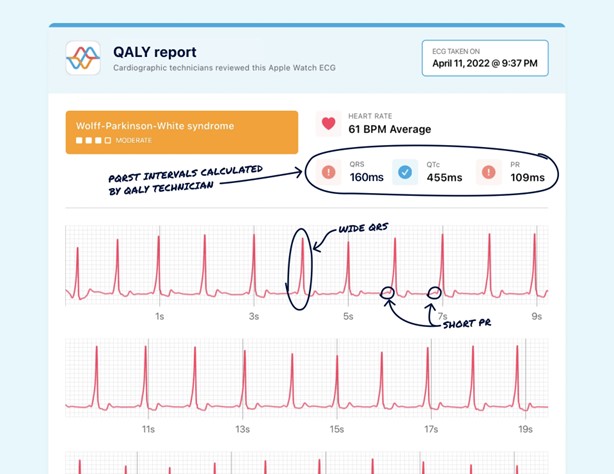A nurse is reviewing the arterial blood gas results for a client in the ICU who has kidney failure and determines the client has respiratory acidosis. Which of the following findings should the nurse expect?
Hyperactive deep tendon reflexes.
Warm, flushed skin.
Widened QRS Complexes.
Bounding peripheral pulses.
The Correct Answer is C
Widened QRS Complexes.
Choice A rationale:
Hyperactive deep tendon reflexes are not typical findings in respiratory acidosis. They are more commonly associated with conditions like hypocalcemia or hypercalcemia.
Choice B rationale:
Warm, flushed skin is not directly related to respiratory acidosis. It is not a typical manifestation of this acid-base imbalance.
Choice C rationale:

Widened QRS complexes on an ECG are characteristic findings in respiratory acidosis. Acidosis can lead to changes in the electrical conduction of the heart, resulting in QRS complex widening.
Choice D rationale:
Bounding peripheral pulses are not directly associated with respiratory acidosis. They may be seen in conditions like hyperthyroidism or anemia but are not specific to respiratory acidosis. Remember, always interpret lab results and clinical findings in the context of the patient's overall condition, medical history, and other relevant factors to provide the best care possible.
Nursing Test Bank
Naxlex Comprehensive Predictor Exams
Related Questions
Correct Answer is D
Explanation
The correct answer is choice D. The client who has gastroenteritis and is febrile.
Choice A rationale:
The client with end-stage renal failure scheduled for dialysis would not be at risk for fluid volume deficit because dialysis is a treatment that removes waste, salt, and extra water to prevent them from building up in the body, keeping a safe level of certain chemicals in the blood, and controlling blood pressure.
Choice B rationale:
Being NPO (nothing by mouth) since midnight for endoscopy typically involves a short period of fasting. While it could potentially contribute to a mild fluid volume deficit, it is not as significant as other causes like vomiting or diarrhea, which can lead to more substantial fluid losses.
Choice C rationale:
A client with left-sided heart failure and an elevated BNP level is more likely to experience fluid volume overload rather than a deficit. BNP is released in response to ventricular volume expansion and pressure overload, which are indicative of heart failure, not fluid volume deficit.
Choice D rationale:
The client with gastroenteritis and a fever is at risk for fluid volume deficit due to increased fluid losses from vomiting, diarrhea, and fever-induced perspiration. These symptoms align with the common risk factors for fluid volume deficit, which include vomiting, diarrhea, and sweating.
Correct Answer is C
Explanation
Choice A rationale:
Hypocalcemia refers to low levels of calcium in the blood, which can present with symptoms like muscle cramps, numbness, and tingling. However, this choice is not relevant to the patient's symptoms in the scenario.
Choice B rationale:
Hypercalcemia is an electrolyte imbalance characterized by high levels of calcium in the blood. It can lead to ECG changes and symptoms like muscle weakness, confusion, and constipation. However, this is not the correct answer in the given scenario.
Choice C rationale:
The patient's symptoms of ECG changes and muscle weakness are consistent with hyperkalemia. Spironolactone is a potassium-sparing diuretic, and its use can lead to increased potassium levels in the blood (hyperkalemia), which can affect the heart's electrical activity and cause muscle weakness.
Choice D rationale:
Hypokalemia is a condition where there is a low level of potassium in the blood. It can lead to muscle weakness, ECG changes, and other symptoms, but it is not the correct answer in this specific situation involving spironolactone use.
Whether you are a student looking to ace your exams or a practicing nurse seeking to enhance your expertise , our nursing education contents will empower you with the confidence and competence to make a difference in the lives of patients and become a respected leader in the healthcare field.
Visit Naxlex, invest in your future and unlock endless possibilities with our unparalleled nursing education contents today
Report Wrong Answer on the Current Question
Do you disagree with the answer? If yes, what is your expected answer? Explain.
Kindly be descriptive with the issue you are facing.
